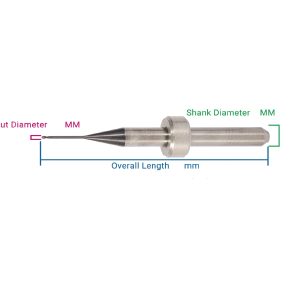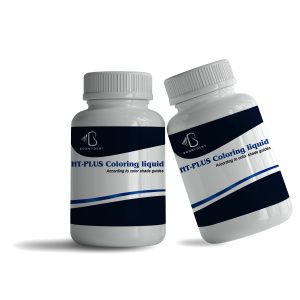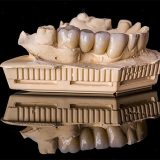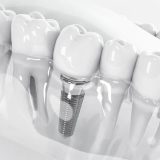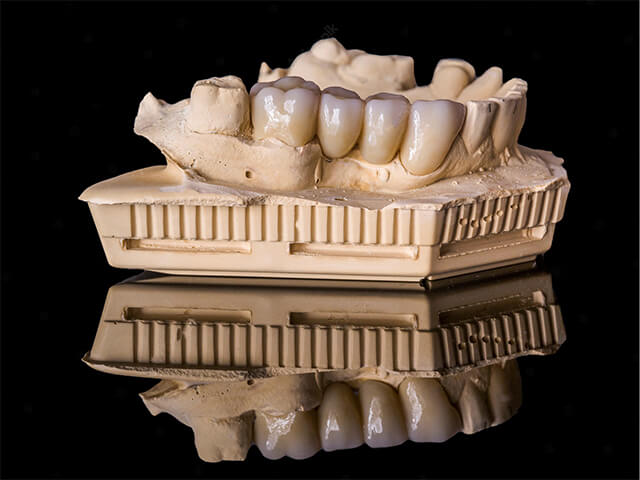
During the last few decades, dental supply manufacturers from all over the world have introduced many different types of dental raw materials. Some did well initially but eventually faded, some never saw the light of day, and some skyrocketed, specifically zirconia. Today, all things considered, zirconia is the best material for dental restorations.
I have been in the dental restoration service business for almost 35 years, and I have witnessed a steady climb in the use of zirconia products in dental restorations. In one decade, its use increased about 400 times in our business, and it still represents about 40% of dental restoration materials. I see no reason for it to slow down any time soon.
For the past 20 years, zirconia has been the most popular raw material not only in dental prostheses, but also in implanted medical devices in general. More and more implant parts are using zirconia. Compared to medical-grade stainless steels or titanium, zirconia fares better and offers more advantages.
For particularly posterior dental prosthetic restorations, the only material that offers more benefits in terms of biocompatibility is gold. However, gold is no longer affordable to many patients. In addition, zirconia offers a more natural look. Therefore, zirconia is the best material for replacing missing teeth.
What Is Zirconia?
Zirconia consists of zirconium dioxide, which has the highest mechanical strength and fracture resistance of all non-metallic materials. Besides the strength, the other main reason it is widely favored in medical devices is due to its superior surface smoothness. In addition to medical prosthetics, zirconia has been widely used across industry and markets in such products as watches, knives, jewelry, valves, gears, and pumps, to name a few.
Zirconia in Dentistry Today
Zirconia is the most recent arrival in dental materials. It only became popular when CAD/CAM was introduced in the dental laboratory process in the 2000s. Until about 2009, when gold prices soared, zirconia had only a small share of the market in dentistry. Then, as an alternative to expensive gold crowns, zirconia became a more popular choice among restorative dentists.
If zirconia is the best material, then why wasn’t it used much before? It’s simple. Most mom-and-pop local dental labs could not afford to invest in high-tech, computerized, advanced CAD/CAM systems. Additionally, most of those small labs did not have the skill or knowledge to use the new technology.
Three Popular Variations
Most zirconia in the market today shares a very similar composition. However, the manufacturing process differs slightly depending on the purpose of the zirconia. For example:
Solid or monolithic zirconia with full compressed blanks to get the maximum strength (1,100 to 1,200 MPa)
Lightly compressed zirconia to accommodate medium translucency of anterior restorations (700 to 850 MPa)
Full zirconia framework stacked with zirconia powder (layered zirconia) to accommodate maximum aesthetics for anterior translucency
There are many different types of zirconia for dentistry today, and it’s confusing because of the many brand names. I receive many calls from our clients asking about this brand and that brand, but my answer is always the same.
Regardless of what they call it, most zirconia shares a similar composition. However, it differs according to the manufacturing process, which affects two main characteristics: the strength and translucency (or opacity).
For example, the opacity of the zirconia blank is directly proportional to the strength. In other words, the strongest zirconia blanks are the most opaque they will be. Therefore, if you need the highest translucency (the least opaque blank) for your anterior restorations, the strength is significantly compromised. Still, it may be stronger than other non-metallic dental raw materials.
As an experienced dental restoration business owner, I believe zirconia is the best material for dental restorations, primarily based on three reasons: longevity, biocompatibility, and aesthetics.
Longevity
Zirconia is known as the strongest ceramic material. It is 10 times stronger than our natural teeth enamel. Therefore, it can last a long time if correctly restored. It’s almost fracture-resistant. I said “almost” because the flexural strength is not as good as metal. This is why I do not recommend cosmetic veneers or crowns thinner than maybe 0.8 mm. In fact, it’s also true for crowns.
Some dentists misunderstand and believe the preparation for monolithic zirconia is similar to a full gold crown. I disagree because of the flexural strength. Therefore, I always recommend a 1.0-mm reduction at the minimum, or even a single-unit monolithic zirconia crown, for maximum longevity. Anything less than that will have the risk of fracture.
Biocompatibility
Most dental materials may contain some level of toxicity or allergic propensities. Since zirconium exhibits excellent corrosion resistance, it’s the most biocompatible dental raw material second to gold.
Because of its superior non-corrosive properties, many critical parts such as pumps, valves, and piping are made out of zirconia. Therefore, zirconia dental crowns are the most biocompatible with our mouth. However, it may not be completely free of an allergic reaction. I recommend checking with the patient’s history of allergies in order to make a wise decision.
Aesthetics
Zirconia is aesthetic but not the most aesthetic. All-porcelain materials such as lithium disilicate are usually more aesthetic than zirconia. I reserve the “most” because of the opacity property of zirconium dioxide itself. Zirconia is as strong as metal, though. Compared to any metal-containing materials, it is the best material and the most aesthetic among the strongest raw materials.
For maximum aesthetics without compromising the strength of the framework, layered zirconia is the best choice. The framework is the strongest zirconia, supporting the strength you need for bridges. Layered with porcelain, it provides the enamel aesthetics you need in an anterior crown. Please note that aesthetics will significantly differ according to a ceramist’s skills and ability to layer porcelain powders.
Limitations
First of all, as discussed above, translucency is the biggest downside of zirconia. There is no magic to this. Zirconium dioxide itself is opaque, and nothing can change that. But you can provide a slightly more translucent appearance by giving up or compromising strength. Still, if you expect solid zirconia to be translucent enough for your anterior enamel, you will be disappointed.
The second is the etching application. Since the surface of zirconia is super-smooth and stronger than metal, it’s not easy to etch a solid zirconia crown. As a matter of fact, you may have to prep differently to provide maximum retention. There are a few methods available to etch zirconia. Still, it will not give you the same etching result as sandblasting a gold crown.
Why Zirconia Is the Best Material
There are three reasons why zirconia is the best material for dental restorations, primarily based on a comparison of metal-containing products, such as porcelain fused to metal, a full metal crown, and titanium. By comparison, zirconia is much more aesthetic, lasts longer, and is even more biocompatible. However, there are a few downsides as well.
Depending on the oral health conditions, you must decide what’s best for your patients. I have witnessed some dentists who only order zirconia for every patient, thinking nothing can go wrong with this material. I agree to some degree, but other conditions may call for other excellent materials, including full gold crowns and lithium disilicate.

